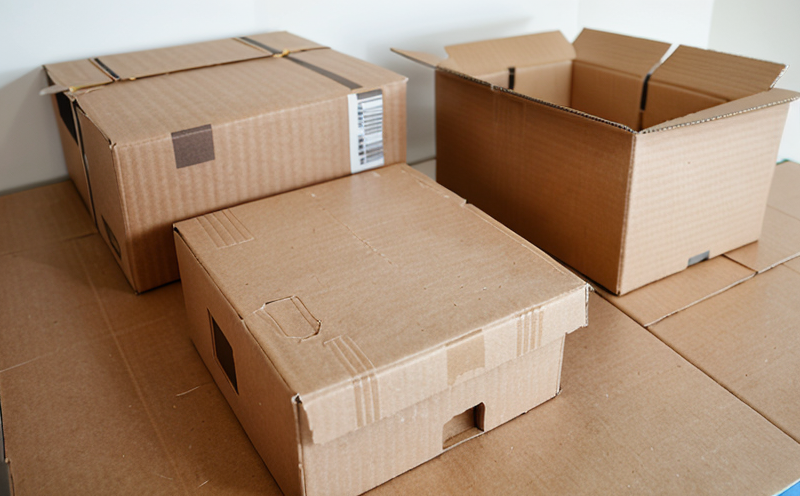ISO 1924-5 Tensile Energy Absorption
The ISO 1924-5 tensile energy absorption (TEA) test is a critical procedure used in the packaging testing sector, particularly for paper and cardboard materials. This method assesses the ability of packaging to absorb mechanical energy during deformation, which is essential for understanding the material’s performance under stress.
The TEA test is part of a broader suite of tests designed to evaluate the structural integrity and safety of paper and cardboard packaging. The test method specifies how specimens are prepared and tested, ensuring that the results are consistent and reproducible. This is important for quality assurance in various industries such as food, pharmaceuticals, and consumer goods.
The primary goal of this test is to determine how much energy a material can absorb before breaking under tensile loading. The data obtained from this test provides valuable insights into the packaging’s performance during handling, shipping, and storage. This information is crucial for optimizing packaging design and ensuring compliance with international standards.
The ISO 1924-5 TEA test involves stretching a specimen to failure under controlled conditions. The energy absorbed by the material during this process is measured in joules (J). A higher value indicates better performance, which translates to more robust packaging that can withstand handling and transport stresses without compromising safety.
The procedure for conducting an ISO 1924-5 TEA test typically involves the following steps:
- Selecting appropriate specimen dimensions as per standard requirements.
- Preparing specimens by cutting them to the specified size and shape.
- Mounting the prepared specimens onto a tensile testing machine.
- Applying force to the specimen at a constant rate until it fails, recording the energy absorbed during deformation.
The results of this test are often presented in graphical form, showing the stress-strain relationship and highlighting the point at which failure occurs. This visual representation aids in interpreting the data and identifying trends or anomalies in material performance.
One of the key advantages of using ISO 1924-5 TEA testing is its ability to identify materials with superior energy absorption properties, which can enhance the overall quality and safety of packaging products. By incorporating this test into their quality assurance programs, manufacturers can ensure that their products meet or exceed industry standards.
| Sample Preparation | Testing Parameters | Data Collection |
|---|---|---|
| Cutting specimens to standard dimensions and shapes. | Tensile testing at a specified rate until failure. | Recording energy absorbed in joules (J). |
Benefits
The ISO 1924-5 TEA test offers numerous benefits to industries reliant on paper and cardboard packaging. These include:
- Enhanced product safety by identifying materials with superior energy absorption properties.
- Improved design optimization through detailed stress-strain analysis.
- Increased confidence in compliance with international standards such as ISO 1924-5.
- Faster and more accurate decision-making regarding material selection for packaging applications.
The test results can also be used to guide process improvements, ensuring that the manufacturing processes are optimized for efficiency and quality. This leads to reduced waste, lower production costs, and ultimately better customer satisfaction.
Competitive Advantage and Market Impact
The ability to conduct ISO 1924-5 TEA testing provides a significant competitive advantage in the packaging industry. Companies that invest in this type of testing can differentiate themselves by offering more robust, safer, and higher-quality products.
- Enhanced reputation: Demonstrating compliance with international standards improves brand image and customer trust.
- Increased market share: Superior product performance often translates to increased sales and market penetration.
- Premium pricing: Higher quality packaging can justify higher prices, enhancing profitability.
Use Cases and Application Examples
| Industry | Paper/Cardboard Type | Test Purpose |
|---|---|---|
| Foods and Beverages | Boxboard | Evaluating the impact resistance of beverage containers. |
| Pharmaceuticals | Plywood-faced cartons | Determining the ability to withstand mechanical stress during transport. |
| Consumer Goods | Gallettes | Evaluating tear resistance under high strain rates. |





